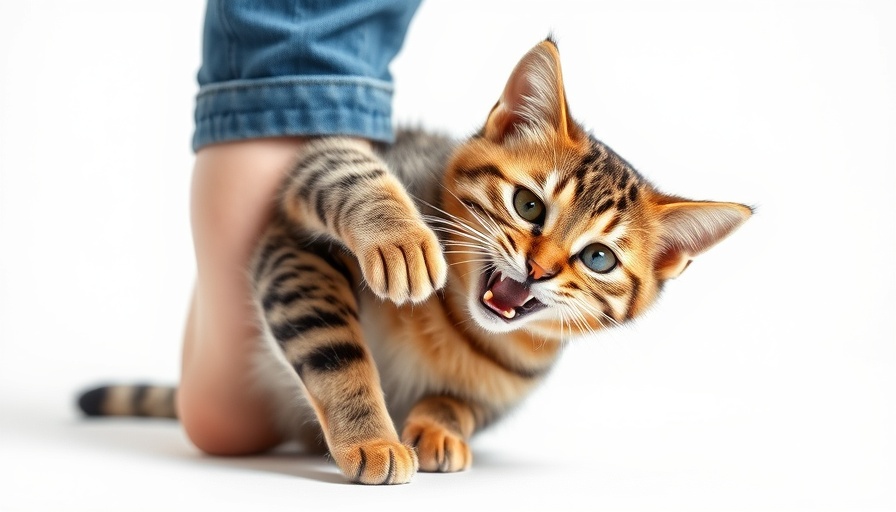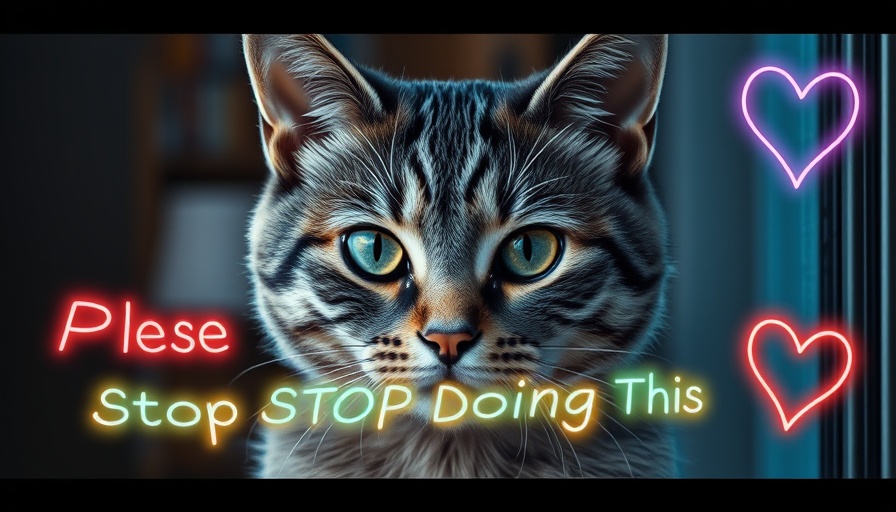
Understanding Your Cat's Affection: What They Don't Say
As pet parents, we often believe that our cats are showing us affection simply by being in our presence. But is it love, or is it just tolerance? Cats communicate in subtle and unique ways, which can sometimes lead us to misinterpret their emotions. In the enlightening video titled 15 Signs Your CAT DOESN'T LOVE You (Even If You Think They Do), the narrator sheds light on the nuanced signs of a cat's emotional distance and how to foster a deeper connection with our feline friends. To help you navigate this delicate relationship, we’ll explore crucial signs that may indicate your cat isn’t as attached as you think.
In 15 Signs Your CAT DOESN'T LOVE You (Even If You Think They Do), the discussion dives into subtle feline communication and emotional distance, exploring key insights that sparked deeper analysis on our end.
Signs of Emotional Distance in Cats
When nurturing bonds with our feline buddies, it's essential to recognize the signs that indicate they might not feel deeply connected to us. According to the video, here are some behaviors to watch for:
- Lack of Response to Your Voice: Cats can recognize their owner's voice but may ignore it entirely. An indifferent response could signify emotional detachment.
- Avoiding Playtime: If your cat shows no interest in playing with you but is eager to engage with toys alone, this could reflect emotional distance.
- Negative Tail Language: A cat’s tail speaks volumes about its emotional state. If your cat's tail is often low or twitching when you approach, they may not feel comfortable around you.
- Fewer Gifts: A cat that loves you will often bring you “gifts.” If your kitty has never presented you with a toy, they might not see you as part of their inner circle.
- Excessive Hissing or Swatting: Frequent defensive reactions around you indicate a lack of trust or comfort in your presence.
How to Foster Emotional Closeness with Your Cat
Fortunately, trust can be built! Here are some actionable steps to create a stronger bond with your feline friend:
- Spend Quiet Time Together: Sometimes, the best way to bond is simply to be present in the same room without forcing interaction. Relaxing together can help your cat feel more secure.
- Let Your Cat Initiate Interaction: Avoid reaching out to pet your cat too often. Allow them to come to you. This respects their comfort and autonomy.
- Use a Gentle Voice: Cats respond better to calm, familiar voices. A soothing tone can help establish a positive connection.
- Create a Routine: Cats thrive in structured environments. Regular feeding times, play sessions, and predictable interactions can enhance emotional security.
- Positive Reinforcement: Reward your cat for approaching or interacting with you, building positive associations with your presence.
The Importance of Body Language
Understanding your cat's body language is vital. Cats express their emotions through various physical signals such as:
- Tail Position: An upright tail indicates happiness and confidence, while a puffed or low tail can signal fear or discomfort.
- Eye Contact: Relaxed, slow blinks are a sign of trust, while prolonged staring without blinking can indicate unease.
Observing these cues can offer insights into your cat's comfort level and help you respond appropriately.
Creating a Safe Environment for Emotional Bonding
To foster a meaningful connection, ensure that your cat’s environment is enriching and comforting. This includes providing suitable toys, scratching posts, cozy resting spots, and maintaining a stress-free atmosphere. Cats that feel safe and stimulated are more likely to engage and bond.
Recognizing the signs of emotional distance in your cat can be disheartening, but it’s essential for developing a deeper connection. Utilize the insights shared in the video 15 Signs Your CAT DOESN'T LOVE You (Even If You Think They Do) to guide your approach to bonding with your feline friend. With patience and understanding, you can turn a distant relationship into a loving bond that enriches both your lives. Remember, every furry companion is unique, and companionship grows with time!
 Add Row
Add Row  Add
Add 




Write A Comment